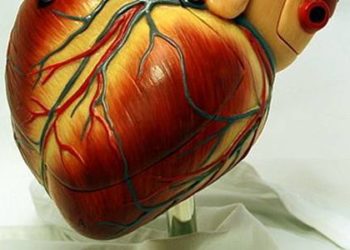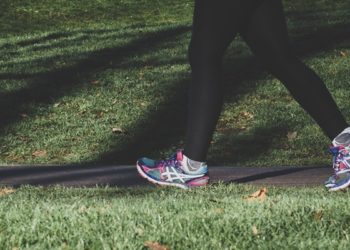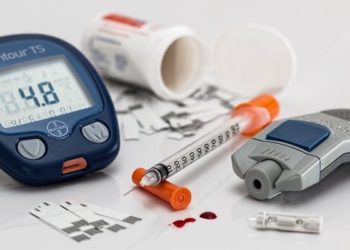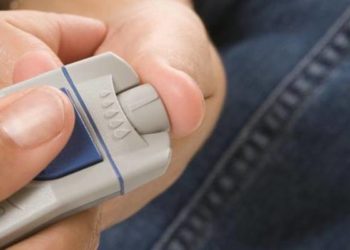Spinal cord stimulation shows considerable improvement in pain and quality of life for patients with refractory diabetic neuropathy
1. 10-kHz spinal cord stimulation (SCS) was safe and effective in treating patients with painful diabetic neuropathy (PDN) refractory to medical management, leading to substantial pain relief and improved health-related quality of life over 6 months.
2. In practice, these results support the integration of 10-kHz SCS into the evidence-based clinical treatment guidelines and continuum of care for patients with PDN refractory to conventional medical management (CMM).
Evidence Rating Level: 1 (Excellent)
Study Rundown: Diabetes has been known to cause systemic changes resulting in profound negative impacts on health and overall quality of life for patients. If left untreated, it can lead to potentially life-threatening complications. Diabetic peripheral neuropathy is a common complication presenting as refractory pain and other dysesthesias. Approximately 20% of patients with diabetes will develop PDN, a progressive and potentially debilitating chronic neuropathic pain condition. Current treatments for PDN include neuropathic pain medications, such as gabapentinoids, serotonin-norepinephrine reuptake inhibitors, tricyclic antidepressants, opioids, and topical solutions. However, high-quality randomized controlled trials (RCT) have demonstrated limited efficacy of these medications with high incidence of adverse effects. Nonpharmacological treatment for PDN with SCS devices was first used in 1996 and studies since have supported 10-kHz (high-frequency) SCS as a superior treatment for chronic, neuropathic pain compared to low-frequency SCS. This prospective, multicenter RCT, SENZA-PDN, compared CMM with 10-kHz SCS plus CMM in patients with PDN refractory to best available medical treatments. Using the inclusion and exclusion criteria, 216 patients with refractory PDN were randomized including 103 assigned to the CMM control group and 113 assigned to the 10-kHz SCS plus CMM treatment group. In the CMM group, 5 of 94 patients (5%) met the prespecified primary end point of 50% or more pain relief assessed via visual analogue scale (VAS) without observed deterioration on neurological examination, compared with 75 of 95 patients in the 10-kHz SCS plus CMM group (79%). This highlights the substantial pain relief and improved health-related quality of life sustained over 6 months in patients with refractory PDN treated with 10-kHz SCS. A major limitation of this study, however, was the lack of blinding between treatment groups as comparing an implantable medical device with best available medical treatment made this extremely difficult. This may have influenced patients and investigators leading to potential biases and placebo effects.
Click to read the study in JAMA
Relevant Reading: Spinal Cord Stimulation and Pain Relief in Painful Diabetic Peripheral Neuropathy: A Prospective Two-Center Randomized Controlled Trial
In-Depth [randomized controlled trial]: This prospective, multicenter RCT took place across 18 treatment sites in the United States between 2017 and 2019. Key inclusion criteria included a diagnosis of PDN with symptoms for 12 months or more refractory to treatment with gabapentin or pregabalin and at least 1 other class of analgesic and lower limb pain of 5 cm or more on a 10-cm VAS. Initial screening of 430 candidates resulted in 216 patients with PDN who were randomized. Of these, 103 were assigned to CMM and 113 assigned to 10-kHz SCS plus CMM. The mean (SD) age was 60.8 (10.7) years, 136 (63.0%) were male, and the median (interquartile range) duration of diabetes and peripheral neuropathy were 10.9 (6.3-16.4) years and 5.6 (3.0-10.1) years, respectively. Accounting for patients lost to follow-up and adverse events (infection from device implant, 2%), the primary end point assessed in the intention-to-treat population was met by 5 of 94 patients in the CMM control group (5%) and 75 of 95 patients in the 10-kHz SCS plus CMM group (79%; difference, 73.6%; 95% CI, 64.2-83.0; P<0.001). For the study’s secondary end point assessments, the mean pain VAS score was 7.0 cm (95% CI, 6.7-7.3) at baseline and 6.9 cm (95% CI, 6.5-7.3) at 6 months for the CMM group. For the 10-kHz SCS plus CMM group, the mean pain VAS score was 7.6 cm (95%CI, 7.3-7.9) at baseline and 1.7 cm (95%CI, 1.3-2.1) at 6 months. Furthermore, improvements from baseline without any worsening on neurological examination was observed in 3 of 92 patients in the CMM group (3%) and 52 of 84 in the 10-kHz SCS plus CMM group (62%) at 6 months (difference, 58.6%; 95%CI, 47.6-69.6; P<0.001).
Image: PD
©2021 2 Minute Medicine, Inc. All rights reserved. No works may be reproduced without expressed written consent from 2 Minute Medicine, Inc. Inquire about licensing here. No article should be construed as medical advice and is not intended as such by the authors or by 2 Minute Medicine, Inc.







